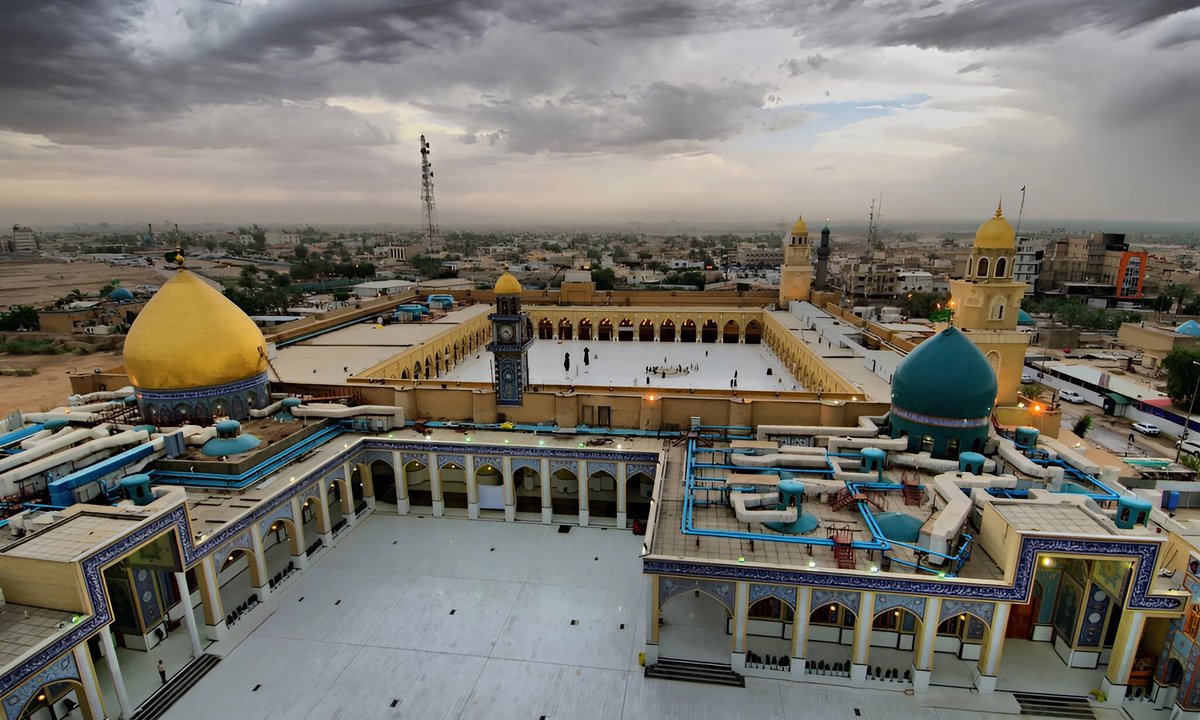
A battle has erupted to save lots of the archaeological web site of Inform Al Sayyagh, a part of the traditional metropolis of Kufa in Iraq. The fierce dialogue hinges on a rising difficulty within the nation: the so-called “funding regulation”. Critics allege that members of Iraq’s State Board of Antiquities and Heritage (SBAH) have used the regulation to permit growth on lots of of essential ruins over the previous ten years—websites now misplaced perpetually, chewed up by bulldozers and buried below concrete.
“They’re destroying the nation’s heritage, and they’re doing it legally,” says one archaeologist, who requested to stay nameless.
Actual-estate growth has been allowed on essential websites reminiscent of Al-Hira, the pre-Islamic capital of southern Iraq, which now partly lies below the Najaf airport; Previous Basra, one of many largest cities in Iraq in the course of the Islamic interval; and in southern Hillah, close to Babylon, in addition to in Babylon itself. In Baghdad, Babylonian, Sassanid and Seljuk-era archaeological stays have all been demolished.
Now, Inform Al Sayyagh is in danger. The realm, which stretches over round 75 acres, dates to Kufa’s golden age of the seventh to eighth centuries and is among the final untouched websites from that point. The medieval metropolis was a centre of studying and tradition—a legacy that lives on in Kufic script, the outstanding calligraphic type—and a cosmopolitan nexus alongside pilgrimage and buying and selling routes.
“The location bears witness to the existence and institution of historic Kufa,” says Aqeel Ghaleb Al-Kharifawi, the chair of the In style Committee for the Safety of Antiquities and Heritage in Iraq, an area NGO that’s preventing to protect the land. “By way of it, we will deduce the structure of the outdated metropolis, because it accommodates buildings for the marketplace for gold and silversmiths and money-changers, who got here from the neighbouring kingdom of Al-Hira. Most of those have been Christians. With out Inform Al Sayyagh, we have now no remaining websites from which to show this.”
Inform Al Sayyagh additionally sits in the course of modern-day Kufa, a rich metropolis the place land instructions a excessive value. In 2017, an entity registered because the Andalusian Wall Firm utilized to construct a residential advanced on the ruins, however the utility was rejected due to Inform Al Sayyagh’s significance. Since then, nonetheless, the choice has been reversed incrementally. In 2023, the Najaf Funding Authority break up the plot in two—a division that critics maintain is unfair—and allowed the corporate to construct on the marginally smaller portion.
Then, late final yr, based on courtroom paperwork seen by The Artwork Newspaper, the Andalusian Wall Firm requested to develop the bigger plot. After a number of appeals and challenges, the corporate was given the go-ahead to construct a residential advanced at a price of $77m in March.
Ali Obaid Shalgham, the director-general of the SBAH, and Suhail Al-Tamimi, the pinnacle of the excavations division, didn’t reply to enquiries about why the SBAH reversed its determination regardless of its earlier statements about Inform Al Sayyagh’s historic significance.
Public opposition
The choice has elicited protests in Kufa and Najaf in addition to robust condemnation on social media. The general public opprobrium is very uncommon: although a number of archaeologists who have been interviewed for this text view the funding regulation as a scourge, many have stored quiet out of worry of jeopardising their relationships with the SBAH. In accordance with one, after plenty of archaeologists final yr commented on social media concerning the razing of a 700-year-old mosque in Basra, one was punished with administrative fines.
The funding regulation was issued in 2006 after which tailored in 2010 and 2015 to assist growth and encourage abroad funding. Its use has elevated previously three years as financial exercise has picked up. It permits corporations to petition the SBAH to vary the classification of archaeological websites to construct on them. Websites in culturally wealthy Iraq are put into three classes—A: main heritage areas such because the Ashurbanipal palace close to Mosul, that are so essential that they may at all times stay protected; B: these on which work is ongoing and must be safeguarded from industrial growth; and C: those who have notable however not overwhelming ranges of historic significance. The funding regulation in impact makes websites from the center class admissible for growth, after an excavation has confirmed that the positioning doesn’t yield vital findings.
Whereas this sounds good on paper, in follow archaeologists say that the SBAH’s surveys are mere perfunctory workouts, carried out to rubber-stamp the sale of the land. “These are excavations that ought to take 5 to 6 years, they usually do them inside months—with out correct instruments—in order that they’ll say that there was nothing there,” says one archaeologist.
Others go additional, contending that there’s a monetary incentive at play. The funding regulation, notably, has been principally utilized in giant cities, the place the value of the land is best, whereas extra distant websites have been left alone. And as Iraq’s financial system grows, the worry is that cultural heritage will more and more be its sufferer.
“If the regulation continues to work on this method,” says one critic, “the archaeological websites might be destroyed and no wealthy websites will stay in Iraq.”

